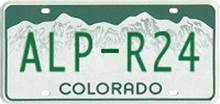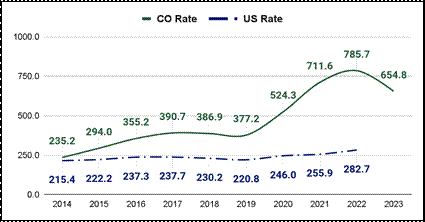ORS: Documents-Research Briefs-ALPR (In Brief)
In Brief:
Automated License Plate Readers (ALPR)
An overview for public safety professionals

Mindy Duong, Statistical Analyst, Office of Research & Statistic (May 2024)
PDF Version- In Brief: Automated License Plate Readers (ALPR)
HTML Version- In Detail: Automated License Plate Readers (ALPR)
PDF Version- In Detail: Automated License Plate Readers (ALPR)
Investigators need one of three elements to solve a crime: a witness, physical evidence, or a confession (Klockars & Mastrofski, 1991 as cited in Willis, et al., 2018). These elements may not be as reliable as desired — witness statements may be misrepresented, physical evidence may be unavailable, and suspect confessions may be fabricated. However, the use of ALPR can help corroborate or disprove these elements by providing objective data on a vehicle’s whereabouts during a specific time and place (Byrne & Marx, 2011 as cited in Willis, et al., 2018). A 2020 survey conducted by the Bureau of Justice Statistics (BJS) found that 65% of participating local police departments used ALPR (Goodison & Brooks, 2023).
ALPR can be used to assist in locating a person of interest (e.g., suspect, victim, missing person), provide information and assistance to an ongoing investigation, or for crime prevention and public safety strategies, but the most notable usage of ALPR is for identifying and locating stolen vehicles. Colorado continues to lead the nation in motor vehicle thefts (MVT) with a rate of 785.7 per 100K residents compared to the U.S. rate of 282.7 in 2022. In 2023, the MVT rate per 100K residents was at 654.8, a 17% decrease from 2022 (see Figure 1). The use of ALPR technology has the potential to assist law enforcement in reducing these high rates.
Figure 1. Colorado Motor MVT rate versus U.S. MVT rate per 100K residents, 2014-2023.

Source: Colorado Bureau of Investigation & Federal Bureau of Investigation, Crime Data Explorer (retrieved, 2/16/2024).
In 2022, the majority (79%) of secondary crimes related to MVT were property crimes, most notably destruction and vandalism (33%), theft from motor vehicles (21%), and stolen property (15%) (CBI, 2022). Using ALPR to help reduce MVT has a potential domino effect on reducing crimes as a whole.
ALPR Usage for Officers
- Hotlists automatically identify and track vehicles and license plates of interest and send alerts when hit.
- Increase arrest rates due to quicker response times using real-time data and alerts.
- Collects millions of vehicle and license plate data to investigate current and historical crimes.
- Data collected can provide a geographic timeline of vehicle travel patterns (EFF, n.d.).
Additional Information & Resources
- Major Cities Chiefs Association (MCCA), ALPR Working Group, Recommendations & Considerations (pdf)
- CATPA: Template Guide for Funding an ALPR System - ALPR Standards and Requirements (pdf)
- IACP: License Plate Reader (LPR) Systems: Use Cases (pdf)
- Check if a vehicle is stolen: Colorado Bureau of Investigation (CBI): Motor Vehicle (VIN) Verification System
- Check if a VIN matches the vehicle: National Highway Traffic Safety Administration (NHTSA) VIN Decoder
References
Byrne, J. M., & Marx, G. (2011). Technological Innovations in Crime Prevention and Policing: A Review of the Research on Implementation and Impact. Journal of Police Studies, 3(20), 17-40. [Linked to the NCJRS Virtual Library that includes a link to a PDF version of the article.] (accessed, 11/15/2023).
CBI (Colorado Bureau of Investigation). (2022). Colorado Crime Statistics: Motor Vehicle Theft 2022 (accessed, 11/15/2023).
EFF (Electronic Frontier Foundation). (no date). Data Driven: What is ALPR? (accessed, 11/1/2023).
Goodison, S. E., & Brooks, C. (2023). Local Police Departments, Procedures, Policies, and Technology, 2020 – Statistical Tables (pdf). Bureau of Justice Statistics, U.S. Department of Justice [NCJ 307405]. (accessed, 1/15/2024).
Klockars, C. B., & Mastrofski, S. D. (1991). The Police and Serious Crime. In C. Klockars & S. D. Mastrofski (Eds.),Thinking about Police: Contemporary Readings (pp. 131-138). New York, NY: McGraw-Hill.
Willis, J. J., Koper, C., & Lum, C. (2018). The Adaptation of License-Plate Readers for Investigative Purposes: Police Technology and Innovation Reinvention. Justice Quarterly, 35(4), 614-638. DOI: 10.1080/07418825.2017.1329936
If you have questions or accommodation requests, please visit the Office of Research & Statistics Request page.
